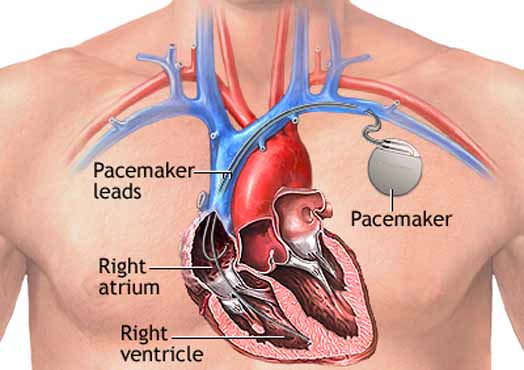
The transradial approach, is a minimally invasive cardiology technique that lets a doctor access a patient's heart through the wrist. For diagnostic heart procedures and treatments (like catheterization, balloon angioplasty and stenting), doctor traditionally used to thread a catheter into the heart via the femoral artery in the patient's groin. However, cardiologists are increasingly introducing catheters through the radial artery in the wrist instead.
At AMRI Mukundapur, it is performed through the thumb artery instead which is a very recent procedure being performed at few select centres around the world.
Your heart’s arteries can become blocked or narrowed from a buildup of cholesterol, cells or other substances (plaque). This can reduce blood flow to your heart and cause chest discomfort. Sometimes a blood clot can suddenly form or get worse and completely block blood flow, leading to a heart attack.
Angioplasty opens blocked arteries and restores normal blood flow to your heart muscle. It is not major surgery. It is done by threading a catheter (thin tube) through a small puncture in a leg or arm artery to the heart. The blocked artery is opened by inflating a tiny balloon in it and then inserting a stent into it..


The pacemaker consists of a pulse generator, which has a battery and a tiny computer circuit, and 1 or more wires known as pacing leads, which attach to your heart.
The pulse generator emits electrical impulses through the wires to your heart. If the pacemaker senses that your heart has missed a beat or is beating too slowly, it sends signals at a steady rate.
An Implantable Cardioverter Defibrillator, or ICD, is a battery-powered device that keeps track of your heartbeat, and can deliver an electrical shock that will allow ventricular muscle fibrillation to return to a normal heartbeat.
The ICD can detect irregular heart rhythms, called arrhythmias In the ventricles. When the ICD detects a dangerous arrhythmia, such as ventricular fibrillation, it sends a strong electrical impulse that ‘shocks’ your heart out of the dangerous rhythm and allows normal rhythms to resume.


An electrocardiogram records the electrical signals in your heart. It's a common and painless test used to quickly detect heart problems and monitor your heart's health.

A transthoracic echocardiogram (TTE) is the most common type of echocardiogram, which is a still or moving image of the internal parts of the heart using ultrasound. In this case, the probe (or ultrasonic transducer) is placed on the chest or abdomen of the subject to get various views of the heart.

TEE uses high-frequency sound waves (ultrasound) to make detailed pictures of your heart and the arteries that lead to and from it. Unlike a standard echocardiogram, the echo transducer that produces the sound waves for TEE is attached to a thin tube that passes through your mouth, down your throat and into your esophagus.

A Treadmill Stress Test (TMT) is a form of stress test that's conducted while you do an exercise walking on a treadmill during the course of an Electro Cardiogram (ECG). The TMT testing compares blood circulation in your heart when you're resting and under the influence of optimum physical pressure.

The Holter monitor is a type of portable electrocardiogram (ECG). It records the electrical activity of th.

24-hour ambulatory blood pressure monitoring is a method to measure blood pressure on a continuous basis. Your BP is measured even as you sleep. The ongoing data helps your doctor get a more accurate picture of your blood pressure numbers.

This procedure is used to record both your blood pressure and heart rate each minute, while the patient is tilted on a table at varying levels. An HUTT can be a great way to determine what is causing your symptoms. The results of the test help us evaluate your blood pressure and heart rhythm..
This website is built with intention of providing basic details about the various diseases. The contents of the website is not meant to replace an in-person consultation. Please follow the advise of your doctor via in-person consultation. This website will not assume any legal responsibility for the patient’s medical condition.
© 2021 Dr. Amit Bhauwala | Web design by Vision Technology Service